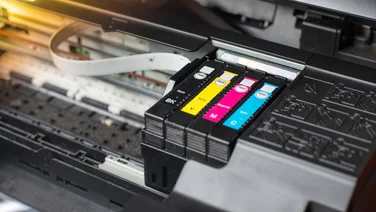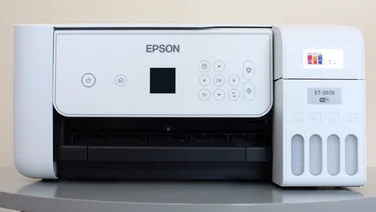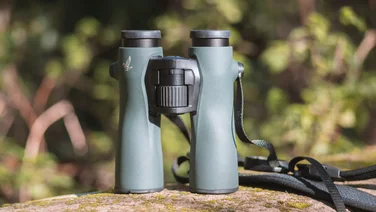To help us provide you with free impartial advice, we may earn a commission if you buy through links on our site. Learn more
- Best wildlife photography lens: At a glance
- How to choose the best wildlife lens for you
- The best wildlife lenses you can buy in 2023
- 1. Canon RF 800MM F11 IS STM: Best lens for birding on a budget
- 2. Sony FE 200-600mm F5.6-6.3 G OSS: Best lens for all-purpose wildlife snapping
- 3. Nikon AF-S NIKKOR 180-400mm f/4E TC1.4 FL ED VR: Best lens for pros
- 4. Sigma 150-600mm F5-6.3 DG OS HSM: Best lens for portability and reach
- 5. Olympus M.ZUIKO ED 75-300MM F4.8-6.7 II: Best lens for practicality

Finding the best lens for wildlife photography can seem an impossible task. With prices for gear ranging from low three figures for budget gear, to low five figures for top-of-the-line pro equipment, choosing kit that suits your needs and especially your finances is a tall order.
Weve rounded up a range of lenses for all budgets and species. Whether you want gear that will make light work of the local deer park, specialist kit for insects, or equipment that will help you make the most of that once-in-a-lifetime trip, weve got it here.
Along the way, well look at lenses that suit particular camera mounts, such as the Sony E-mount, Canon RF mount, and Nikon Z-mount, as well as lenses that are available for multiple camera mounts at once. Well consider the all-important image quality, as well as things like build quality, features, size, weight, and more.
If you know you love wildlife and would like to shoot better images of it, but dont know where to start, make sure you stick with us through our buyers guide.
READ NEXT: Sit comfortably in nature with with best camping chairs
Best wildlife photography lens: At a glance
- The best lens for birding on a budget: Canon RF 800MM F11 IS STM | £860
- The best all-purpose wildelife lens: Sony FE 200-600mm F5.6-6.3 G OSS | £1,599
- The best lens for pros: Nikon AF-S NIKKOR 180-400mm f/4E TC1.4 FL ED | £10,999
- The best for portability and reach: Sigma 150-600mm F5-6.3 DG OS HSM | £849
How to choose the best wildlife lens for you
What focal length should I get?
For the uninitiated, the focal length of a lens is measured in millimetres and the more millimetres your lens has, the tighter its field of view. So a wide-angle lens for landscapes might have a focal length of around 20mm, and a lens for head-and-shoulders portrait photography might be in the 50-80mm region.
For wildlife, where youre often photographing subjects that might be far away, or shy, or small or all three, the whole unholy triumvirate you will want more focal length. How much more depends on a few factors, but for simple photography in your local deer park, a lens that offers a focal length of 70-300mm will be a great start. But, more often than not, wildlife photography is shot at longer focal lengths than that think at least 400-500mm. And if you want to photograph smaller, flightier subjects like small, garden-variety birds youll probably want even more, and between 600mm and 800mm will get you amazingly impactful results.
It is worth noting that the size of the sensor in your camera makes a difference to the focal length. Some cameras have full-frame sensors the same dimensions, pretty much, as an old-school frame of 35mm film. If this is the case, the focal lengths marked on your lenses will be true. Other cameras such as crop-frame cameras with APS-C size sensors; or cameras with even smaller sensors like those with a Micro Four Thirds lens mount apply a multiplier to every lens you attach. On an APS-C sensor the multiplication factor is either 1.5 or 1.6x, so a 400mm lens becomes a 640mm lens on an APS-C camera. On Micro Four Thirds cameras the multiplication factor is a straightforward 2x; so a 400mm lens becomes an 800mm lens.
READ NEXT: Our pick of the best waterproof cameras
Should I get a zoom lens?
Now theres a good question. Lenses that zoom starting at a relatively wide focal length and then zooming in to a much tighter field of view are undeniably convenient, as they allow you to re-compose a scene without needing to get closer. Thats useful if youre photographing animals that are likely to be scared off by a photographer moving about.
So why would you get a prime lens a lens with a fixed focal length? A zoom lens needs to produce acceptable images at all its focal lengths, but a prime only needs to be really good at one. And while its true that youre trading in a bit of convenience, youre potentially saving quite a lot of weight. You can lose the zoom mechanism and quite a bit of extra glass for example, Canons 70-200mm f/2.8 contains twice the number of glass elements and is almost twice as heavy as the Canon 200mm f/2.8 prime or have a lens that weighs the same but has a larger aperture. Speaking of which&
What size aperture do I need?
The aperture is the iris mechanism in a lens that changes size to let in more or less light and, without wishing to be flippant, you want the biggest aperture you can possibly afford. A bigger aperture means a shallower depth of field, and so more subject isolation against its background, but it also has an effect on shutter speed a bigger aperture means more light which means faster shutter speeds. This is crucial for wildlife photography, where the limiting factor for image sharpness is not necessarily the stability of the photographer, but how much the subject is able to move mid-shot. Affordable lenses for wildlife photography tend to offer apertures in the region of f/5.6 to f/8 and you should get something brighter if you can afford it, as the difference between a lens that can shoot f/4 and one that can only shoot f/8 will make itself known when the light starts to fade.
Do I need image stabilisation?
Image stabilisation certainly doesnt hurt. If youve got a static subject in failing light, then being able to shoot slightly longer exposures, without sacrificing image sharpness, can be a godsend. However, if your kind of photography is a bit more action-packed a leopard pouncing on prey, or a tiger tearing through the trees then sharp images will be the result of an appropriate shutter speed. So image stabilisation is a nice-to-have, rather than a must-have.
How much should I spend?
Prices for wildlife lenses run from the reasonable around £100 to the frankly absurd around £20,000 for a current-generation prime super-telephoto. As you spend more, youre going to get a little more focal length and a lot more aperture. And a bigger spend will also result in more weather-sealing which will let you shoot longer and in worse conditions and better overall build quality, both of which are useful for lenses that can expect to spend much of their working lives outside. Theres no simple answer here, as it depends what you can afford and what you need from a lens.
READ NEXT: The best cameras for wildlife photography
The best wildlife lenses you can buy in 2023
1. Canon RF 800MM F11 IS STM: Best lens for birding on a budget

Price: £860 | Buy now from Amazon
If youd told us that one day Canon would be selling an 800mm prime lens, for its latest mirrorless cameras, for under a thousand pounds, wed have found you a comfy blanket and a quiet place to lie down for a bit. And yet here we are: the 800mm f/11 IS STM costs under £900, and, on paper at least, looks like it could be the answer to quite a few wildlifers prayers.
Pop it out of the box and youre in for a pleasant surprise at just 1.3kg, its a lightweight little character. And its small too just 282mm long when closed, although youll need to extend it to its full length of 352mm to actually shoot a picture with it.
It achieves this thanks to diffractive optics grated elements within the lens that drastically reduce how long it needs to be to produce the desired focal length. And theres further weight reduction in the absence of a traditional aperture mechanism unusually, the 800mms f/11 aperture is fixed, so you cant opt for anything bigger or smaller.
Of course, this produces limitations, and those in search of straightforward image quality will probably want to look elsewhere there are sharper lenses out there, to say nothing of lenses with more attractive bokeh. Youll also find yourself in a continuous hunt for high ISOs, particularly at the kind of shutter speeds youll want for moving subjects.
All that said: thanks to its low weight, this is a lens that you wont mind carrying about with you.
Key specs Focal length: 800mm; Maximum aperture: f/11; Mount: Canon RF; Image stabilisation: Yes; Filter diameter: 95mm; Dimensions (LxD): 351.8 x 101.6mm; Weight: 1,260g
2. Sony FE 200-600mm F5.6-6.3 G OSS: Best lens for all-purpose wildlife snapping

Price: £1,599 | Buy now from Amazon
Were huge fans of this one. Price-wise its not too shocking, particularly when you look at the specs. The focal length lends itself to pretty much any type of wildlife photography, without the compromise in convenience youd have to make with a prime lens. 200mm is good enough for animals-in-their-environment images, while 600mm at the long end will get you those ultra-detailed close-ups of distant faces.
It fits the bill weight-wise as well 2kg isnt exactly light, but its certainly handholdable, as well as being tolerable in a backpack. The aperture gets smaller as you zoom in f/5.6 at the wide end is nothing special, and f/6.3 at 600mm is going to result in some pretty astronomical ISOs if you want shutter speeds in the mid-thousandths of a second but these are compromises worth making for a lens this good.
And it is good. Its lovely and sharp throughout its focal length range. And while it does get a little sharper, and shows a little less chromatic aberration, as you begin to stop down, its still pretty good when you shoot it with the aperture wide open which is likely to be the case for much of your photography. It vignettes a little at wider apertures as well, but thats nothing a quick trip through Lightroom cant fix.
There are better quality lenses out there just compare this to Sonys FE 600mm F4 GM OSS to see what an extra £10,000 can buy you but, for a lens that wont destroy your spine and returns images that are more than good enough, this is a great piece of kit.
Key specs Focal length: 200-600mm; Maximum aperture: f/5.6-6.3; Mount: Sony E; Image stabilisation: Yes; Filter diameter: 95mm; Dimensions (LxD): 318 x 111.5mm; Weight: 2,115g
3. Nikon AF-S NIKKOR 180-400mm f/4E TC1.4 FL ED VR: Best lens for pros

Price: £10,999 | Buy now from Wex
If you own a Nikon Z-mount camera, youve got a decent number of options when it comes to Nikon-made, pro-am wildlife optics. But its possible Nikon got it right back in 2018 when they announced this: the Nikon AF-S NIKKOR 180-400mm f/4E TC1.4 FL ED VR, an unapologetically top-flight lens whose price matches its insane specifications and image quality.
To start with the basics, the focal length is wildlife-friendly to say the least. 180mm is a decent enough wide-angle, while 400mm is a great option for detailed close-ups. The aperture f/4 at its largest doesnt get smaller through the focal length range, which means your exposure wont change as you zoom in.
But theres more: contained in an innocuous-looking hump on the lens right hand side is an integrated teleconverter a small mechanism that flips in at the back of the lens to magnify its focal lengths by 1.4x. That means the lens goes from having a 180-400mm focal length to a 252-560mm focal length. You lose a stop of aperture in the process, but a pro-quality zoom lens with a maximum reach of over 500mm and an aperture of just f/5.6 is really something worth writing home about.
And its pro quality terrifyingly sharp throughout both its focal and aperture range, it controls chromatic aberration superbly well and will do justice to just about any subject. Image stabilisation (or Vibration Reduction in Nikons slightly clumsy parlance) works fantastically well, useful given the 180-400mms build quality were happy describing it as tank-like as tanks are exceptionally heavy which, at over 3kg, this lens is too.
Key specs Focal length: 180-400mm; Maximum aperture: f/4; Mount: Nikon F; Image stabilisation: Yes; Filter diameter: 40.5mm; Dimensions (LxD): 362.5 x 128mm; Weight: 3,500g
4. Sigma 150-600mm F5-6.3 DG OS HSM: Best lens for portability and reach

Price: £849 | Buy now from Amazon
The Sigma 150-600 ticks a lot of boxes. Practical focal length? Check at 150-600mm were talking about a lens that can handle subjects big and small, near and far, really well. Sensible aperture range? Check f/5 at 150mm might not be particularly generous, but f/6.3 by the time you get to 600mm is a good compromise between heavy and bright, and lightweight but dark. Portable? You bet 1.8kg might not be the kind of weight youll forget about, but its light enough that you could tote it through an airport, or in a backpack, for a few hours.
Its a well-built optic as well pro super-telephoto lenses might offer a slightly more robust-feeling build quality, but the Sigmas tough plastic construction wont give you too much concern. Its dust and splash resistant to boot, offering even more peace of mind.
All of which is for naught if it cant take a decent image but, thankfully, it can. Its nice and sharp, even wide-open, with attractive bokeh and extremely well-controlled chromatic aberration.
Compromises? Sure, but, for this price, most amateurs and even a few pros will find the Sigma offers amazing bang per buck.
Key specs Focal length: 150-600mm; Maximum aperture: f/5-6.3; Mount: Sigma, Canon EF, Nikon F; Image stabilisation: No; Filter diameter: 95mm; Dimensions (LxD): 260.1 x 105mm; Weight: 1,930g
5. Olympus M.ZUIKO ED 75-300MM F4.8-6.7 II: Best lens for practicality

Price: £410 | Buy now from AmazonThe plus points with the M.Zuiko 75-300mm lens just dont stop coming. For wildlife types, its ultra-long because of the small sensors on Micro Four Thirds cameras it has an effective focal length of 150-600mm all bound up in a tight little package that weighs only a shade more than 423g.
Its well-built the zoom ring, in particular, is huge and easy to find. And the autofocus mechanism is fast and effective, locking onto subjects quickly. The manual focus ring on the very front of the lens is a little smaller, but still easy enough to get hold of.
Its hard to overstate just how practical this lens is. Micro Four Thirds cameras are already small, so this which measures just 117mm from end to end, suitable for popping in a pocket might just be the ultimate travel and wildlife lens. Its easy to justify taking just about anywhere you go, and both the focal length and aperture range f/4.8-6.7 at the wide-angle and telephoto focal lengths respectively makes comparing this lens to almost identically specified lenses for larger-sensor cameras feel positively unfair. A great (tiny) bit of kit.
Key specs Focal length: 75-300mm; Maximum aperture: f/4.8-6.7; Mount: Micro Four Thirds; Image stabilisation: no; Filter diameter: 58mm; Dimensions (LxD): 116.5 x 69mm; Weight: 423g










